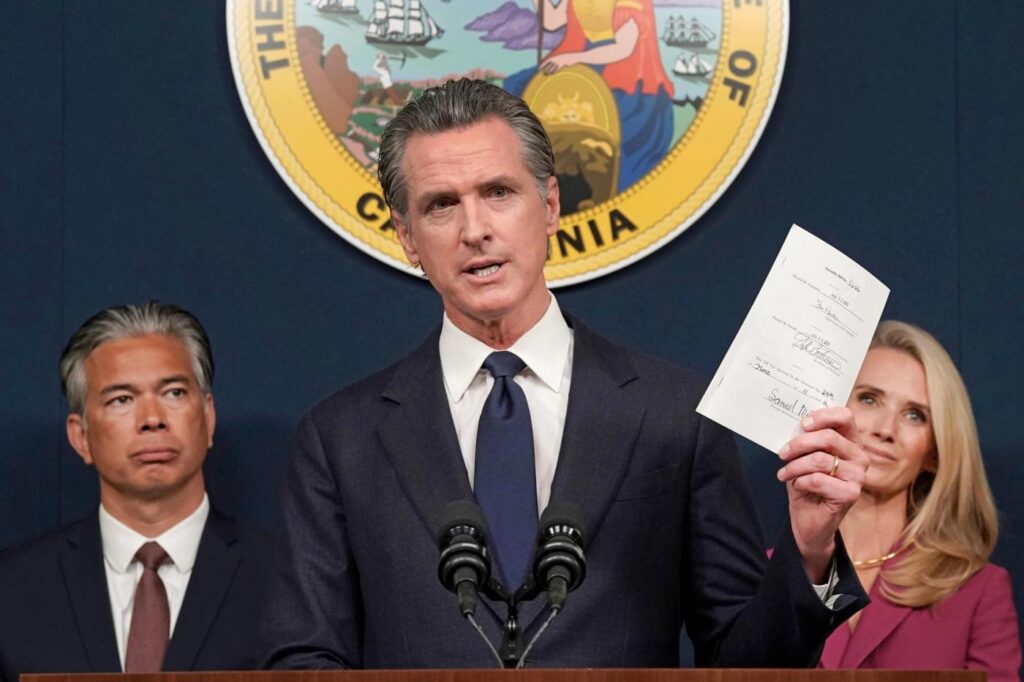
Look East, California Democrats, to fellow party members in Colorado and Pennsylvania. In both states, Democratic governors cut taxes to spur growth.
First came Gov. Jared Polis of Colorado, elected in 2018 on a tax-cut platform. In 2020, he helped pass Proposition 116, which cut the state’s flat tax rate from 4.63% to 4.55%. The opposition was predictable. Fair Tax Colorado griped Prop. 116 would “demand another $154 million cut from our budget.” And most of the benefits would go to the top 3%. “For example, someone making $1 million will receive $800, while average Colorado taxpayers will only see $37 in tax savings.”
Polis explained, “An income tax cut is broad-based relief and not only helps families get by in a challenging time but also helps our economy grow.” Voters were convinced and approved it 58% to 42%. Even though the Yes side was outspent two-to-one; $1.6 million to $3.2 million.
In 2022, running for re-election, Polis backed Proposition 121, which further cut the tax rate, to 4.4%. Voters loved it even more, the Yes side garnering 65% to 35% for No. It was clear it was going to pass, so campaign spending was more muted. Yes got $586,386 to $381,377 for No.
Polis made it a plank in his re-election bid and even backed eventually eliminating the income tax. He easily won against Republican Heidi Ganahl, 59% to 39%. Obviously there were other issues in the campaign, such as abortion. But Polis took away a major GOP plank, cutting taxes, and made it his own.
So, did the tax cut force slashing the state budget, as Fair Tax Colorado predicted? Nope. The opposite happened as the cuts goosed growth and broadened the tax base. For fiscal year 2018-19, the last under the higher tax rate, income tax revenue clocked at $8.2 billion. By 2020-21 it was $9.5 billion, a 16% increase over two years.
It’s too early to calculate the effects of last November’s Prop. 121. But according to the Sept. 2023 Economic & Revenue Forecast by the nonpartisan Legislative Council Staff, “Individual income tax collections are expected to grow by 9.4 percent in FY 2024-25 to $11.85 billion, and by 6.9 percent in FY 2025-26 to $12.66 billion.”
One of Polis’ biggest cheerleaders is economist Arthur Laffer. He helped design California’s Proposition 13 tax cuts in 1978 and President Reagan’s 1981 and 1986 tax cuts that put the boom in the 1980s economy. In May I attended a special lunch in his honor by the Pacific Research Institute at the Pacific Club in Newport Beach.
Citing Polis, he said, “I want to tell you that there are young people today who are very much in the game and have the correct way of viewing the world. I’m just honored to see these young people coming through. Don’t give up hope. Please don’t.”
To be fair, the Wall Street Journal on Sept. 12 criticized Polis for backing Proposition HH, on the Nov. 7 ballot this year, because it “disguises a revenue grab as a property-tax cut.” But even Reagan sometimes backed tax increases. But in both cases, the overall effect was strong, overall low-tax, pro-growth policies.
Related Articles
Snitch scandal infected Orange County’s justice system
Newsom-Bonta lawsuit against oil industry good PR strategy, bad for fighting climate change
Newsom: Sign bill boosting coastal housing
Compromise will boost fast food costs
Reagan’s legacy on taxes: What to take, and what to leave?
Switching to Pennsylvania, on Aug. 4 Gov. Josh Shapiro signed into law a major property tax/rent rebate expansion. His office called it “the largest targeted tax cut for seniors in nearly two decades, expanding access to nearly 175,000 more Pennsylvania seniors and nearly doubling the maximum rebate.” He is promising more tax cuts.
The aim is to reverse Pennsylvania’s population loss of 39,957 residents to other states from 2021-22. By contrast, low-tax Colorado gained 5,376. And high-tax California, notoriously, lost 343,230.
Meanwhile, as Jon Coupal and Sara Catalan wrote in the Register on Sept. 9, “Assembly Democrats declare war on Proposition 13,” with two new initiatives on the Nov. 2024 ballot making it easier to raise taxes.
That’s in a state already the most taxed in the country. Democrats in the Golden State need to look at their party comrades in the Rocky Mountain State and the Keystone State for inspiration to make people’s lives better through cutting taxes.
John Seiler is on the SCNG Editorial Board.
